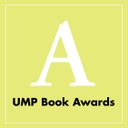Alien Phenomenology: add ecology and stir
Though it may not be quite true that Environmental Critique has declared its love for object-oriented ontology, EC certainly speaks to strange strangers and dabbles in “carpentry.”[1] In that spirit I offer a “tiny” (as opposed to lofty) review of Ian Bogost’s Alien Phenomenology, Or What It’s Like to Be a Thing, released this month on University of Minnesota Press (posthumanities series). (The connections to stated EC interests here are mostly implicit, but I solicit comments to make them explicit.) Ian was kind enough to send me a PDF about the time I published my “Babooon Metaphysics” post (and suggested the title as I recall), and I am grateful for the e-copy because it’s so good about search and seizure; however, I am also very happy that I bought a hard copy. The colored plates are wonderful, as is the general look and feel of the book . . . as is the price: $13.95. Yes, I am peddling the book . . . I’m a blog post.
Alien Phenomenology is a succinct exploration of object-oriented ontology (OOO) in conversation with posthuman phenomenology. “If ontology is the philosophical study of existence” Bogost explains, “OOO puts things at the center of being. We humans are elements, but not the sole elements, of philosophical interest” (6).[2] Similarly, phenomenology, “the area of metaphysics concerned with how stuff appears to beings,” is uncoupled from consciousness, which privileges the mechanisms by which human beings in particular attempt to grasp objects (32). Alien Phenomenology extends OOO and posthuman phenomenology through application—reading, writing, and otherwise “metaphorizing” a rich variety of objects in pop culture, personal memory, junk food, video games, old jokes, expensive cakes, plastic fruit, etc. Bogost is partial to Graham Harman and Bruno Latour throughout, and to the computer “as prompt” (9). Geeks (I use the term reverently) will swoon. Non geeks will also find much of value and interest, including the sections on Atari VCS graphics.
Story Date: 2012-04-13T00:00:00



